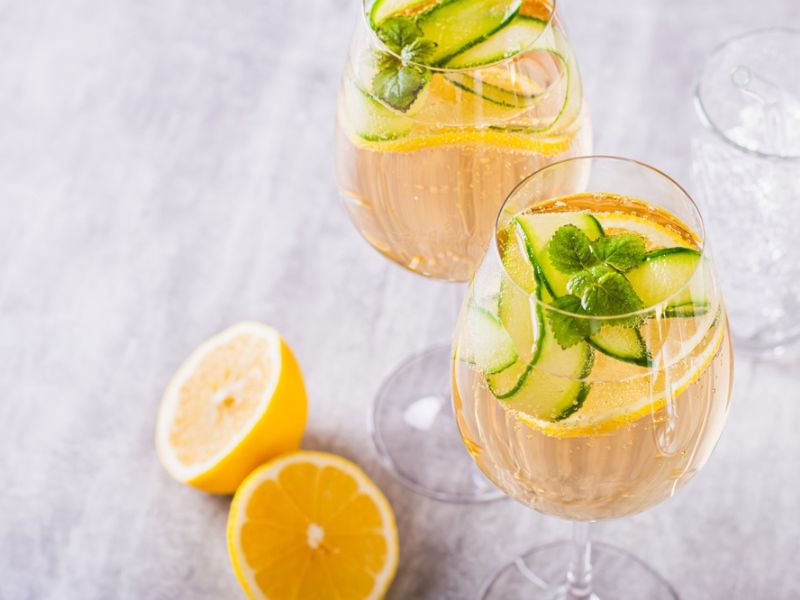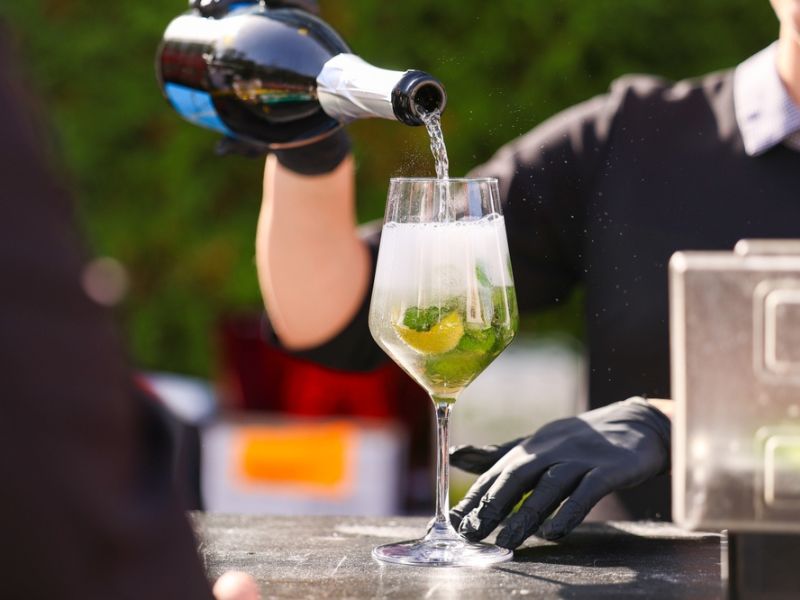The “drink of the summer” battle has always been intense. The Aperol spritz has long been the reigning champion, embodying the essence of summer indulgence. However, this year, a new competitor has emerged to challenge the dominance of the bitter orange aperitif: the Hugo. Esteemed figures in the food and beverage industry and the vibrant social media scene declare this refreshing cocktail the latest “it” drink. But how new is the Hugo, and does it live up to the hype? Here’s everything you need to know.

Image Credit: Shutterstock/Rui Elena
Hugo: What Is It?
The Hugo cocktail is a spritz made with elderflower liqueur, prosecco, soda water, and fresh mint. It is typically served over ice in a wine glass and can be garnished with lime slices. While it is technically an aperitif, it can be enjoyed anytime, especially during warm months and outdoor dining.
Origin Of The Hugo Cocktail
The Hugo cocktail is believed to have originated around 2005 on the Austrian-Italian border. Bartender Roland Gruber, also known as A.K., is credited with creating it at his bar San Zeno in Naturns, Italy. The original Hugo recipe included prosecco, soda, fresh mint, and lemon balm syrup. It draws inspiration from the refreshing white spritz, combining mint, citrus, prosecco, and carbonated water.

Image Credit: Shutterstock/Dragos Asaftei
Comparing The Hugo To Other Spritzes
Comparing the Hugo to the classic Aperol spritz, the two differ in flavor profiles. While the Aperol spritz is known for its bitter notes and vibrant orange citrus, the Hugo offers a floral, citrusy, and minty lightness, according to Camille Vidal, creator of Mindful Cocktails. Despite their differences, the Hugo and Aperol spritz belong to the same “family” of spritz drinks, characterized by their combination of liqueur, sparkling wine, and sparkling water.
The Rising Popularity Of The Hugo
Cocktail
The Hugo cocktail is gaining popularity beyond European aperitif culture, with increasing mentions on TikTok and social media. The spritz category, including the Hugo, has seen a significant rise in popularity, especially in North America. It can be attributed to the return of international travel and a desire for social rituals after the peak of the COVID pandemic.